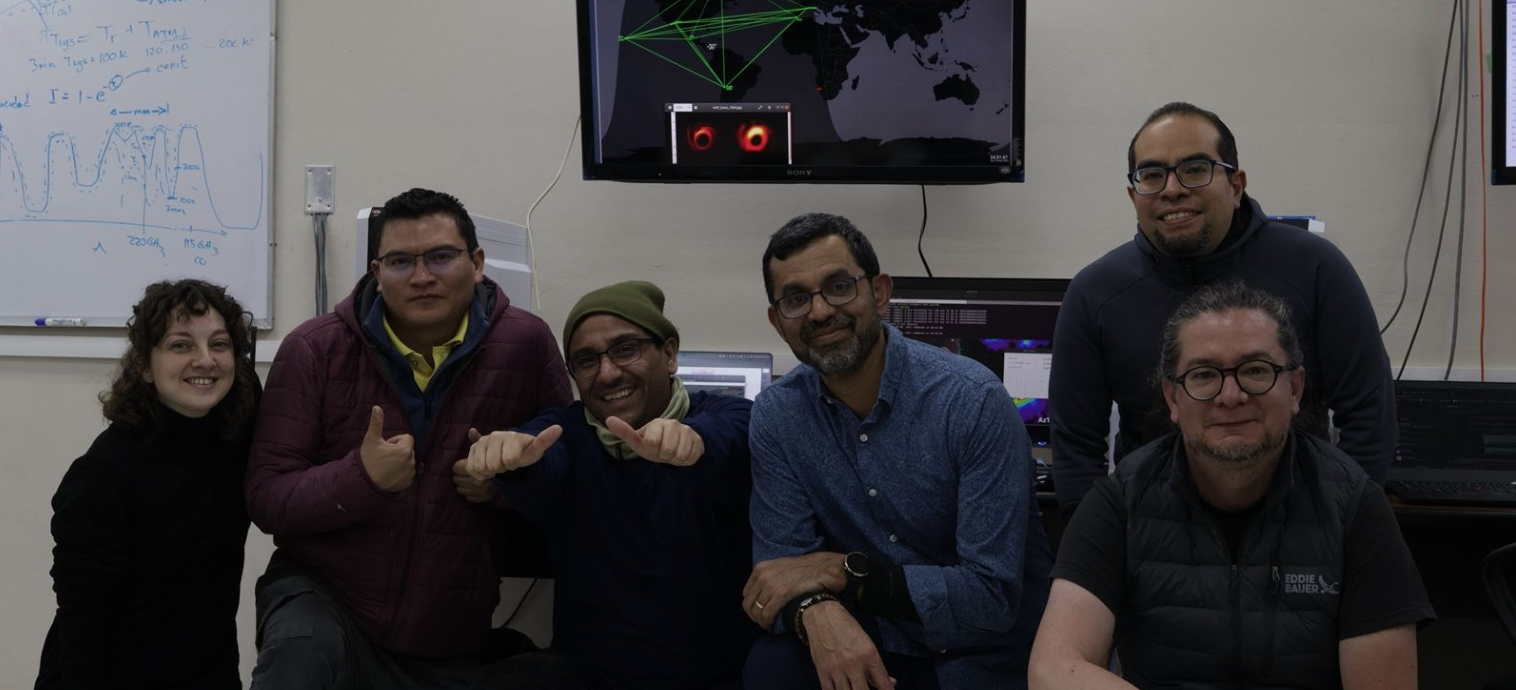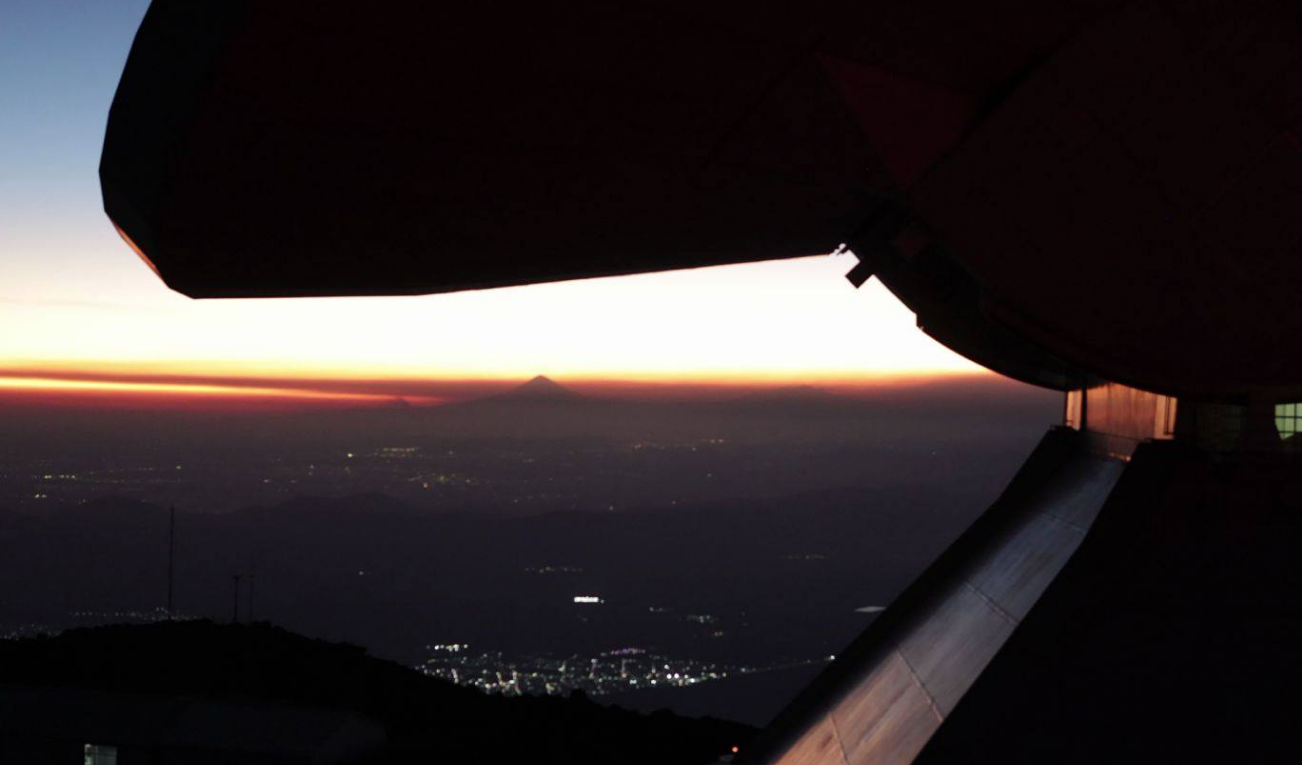The Large Millimeter Telescope participates in the global Event Horizon Telescope 2025 campaign
From April 3 to 14, 2025, telescopes from around the world joined forces once again for one of the most ambitious observation campaigns in modern astronomy: the Event Horizon Telescope (EHT) campaign. This international collaboration aims to observe supermassive black holes, objects whose enormous gravity prevents even light from escaping, and whose study can provide fundamental clues to understanding how the universe works.

The EHT works using a technique known as very long baseline interferometry (VLBI), which combines data from radio telescopes located around the world to form a virtual telescope the size of the diameter of a planet. This provides unprecedented angular resolution, capable of observing extremely compact regions around black holes. One of the key participants in this network is the Alfonso Serrano Large Millimeter Telescope (LMT), located atop the Sierra Negra volcano in the state of Puebla, Mexico. The LMT, jointly operated by the National Institute of Astrophysics, Optics, and Electronics (INAOE) and the University of Massachusetts Amherst, provides a strategic location and world-class technical capability that significantly strengthens the EHT network.
During the current observing campaign, the telescopes are focusing their attention on M87*, the supermassive black hole located at the center of the Messier 87 galaxy in the Virgo Cluster. This object was the subject of the historic image published in 2019, the first to show the immediate surroundings of a black hole, and has since been the subject of ongoing study.
The simultaneous viewing window for all participating telescopes is short: approximately 20 minutes, during which all sites around the world can observe M87* simultaneously. However, those minutes are invaluable, as they allow for the capture of data that, when combined, offer a comprehensive and dynamic view of the behavior of the black hole and its surroundings.

One of the main scientific objectives of these observations is to analyze how the environment around the black hole evolves over time. Researchers seek to better understand extreme processes such as relativistic jets, powerful outflows of matter that emerge from the vicinity of the black hole at speeds close to the speed of light. Understanding how they originate and how they connect with the black hole itself is one of the most important open questions in high-energy astrophysics.
The LMT's participation in this campaign reinforces Mexico's role at the forefront of international science and represents a remarkable example of large-scale scientific collaboration. These types of efforts, which combine high-tech infrastructure, international cooperation, and interdisciplinary work, are essential for advancing our understanding of some of the most complex and fascinating phenomena in the universe.
Top-level science made in the state of Puebla.

Luis Enrique Erro # 1, Tonantzintla, Puebla, México, Código Postal 72840, Tel: (222) 266.31.00, difusion@inaoep.mx
This work is licensed under a Creative Commons Attribution-NonCommercial-NoDerivs 2.5 Mexico License.


